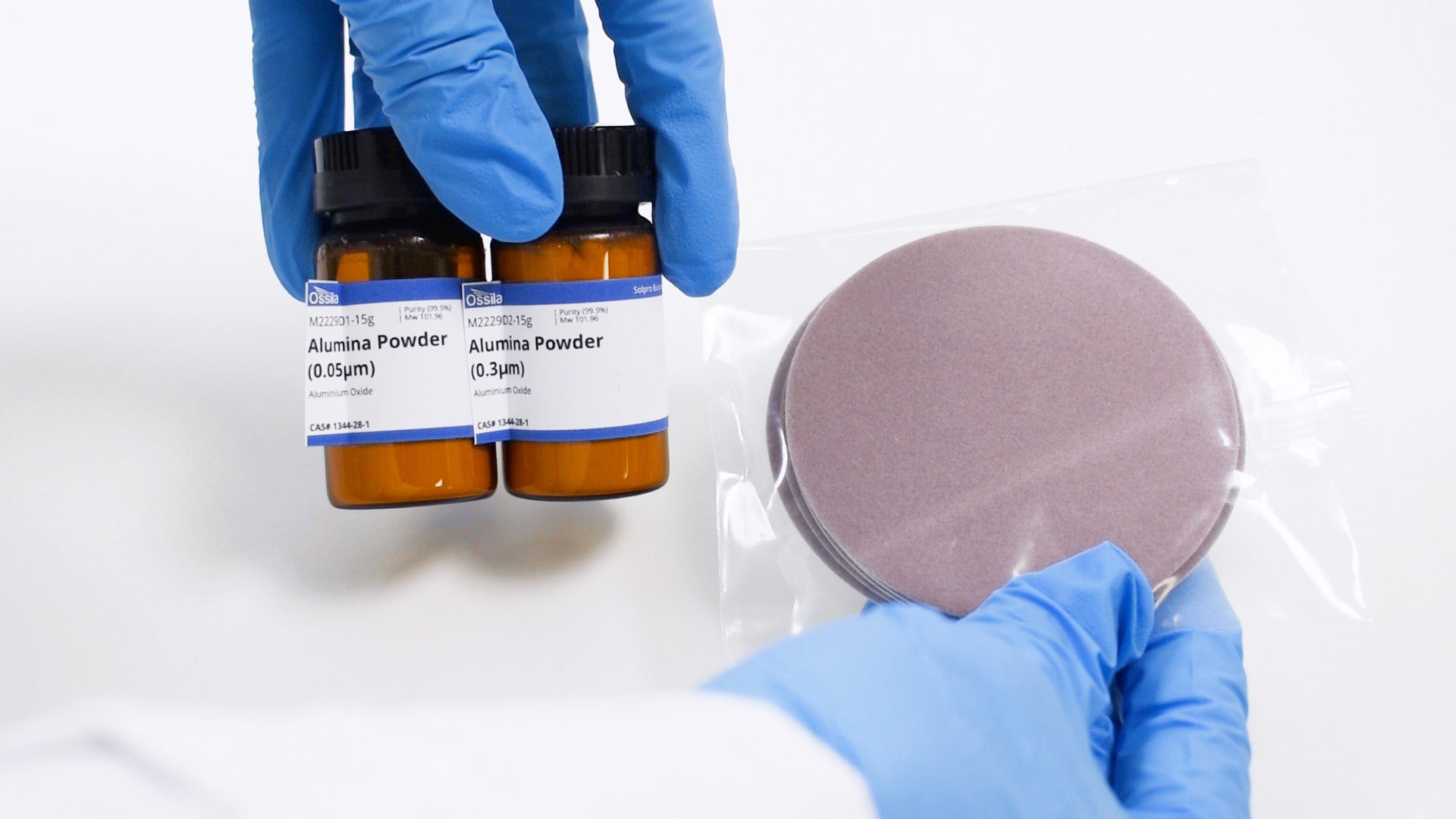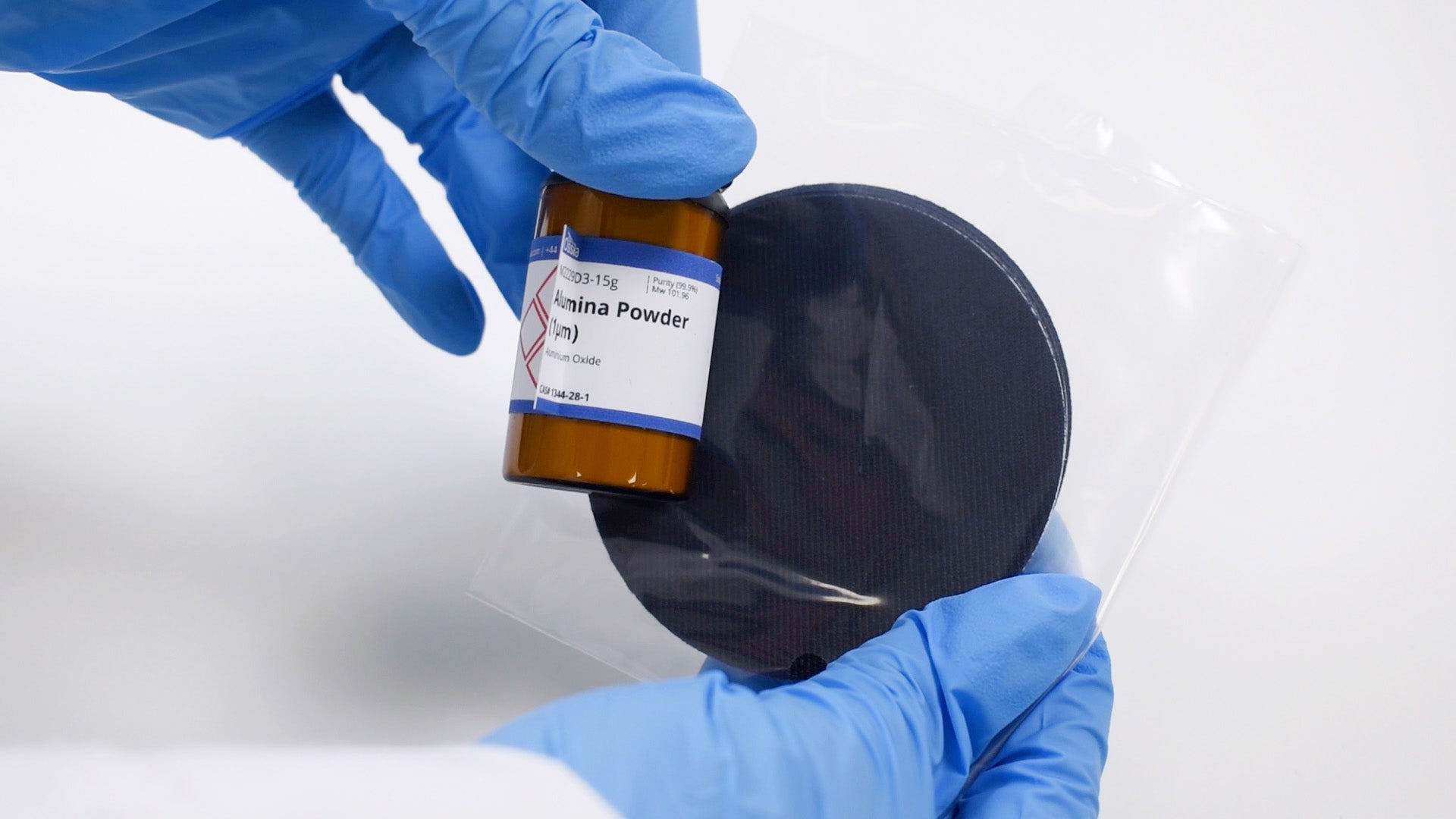Electrode Polishing Kit, EPK-3
Electrochemistry Supplies, Electrodes, MaterialsElectrode Polishing Kit, EPK-3
Restore electrodes to their prime condition for reproducibility with the Ossila EPK-3 Polishing Kit
Overview | Kit Includes | MSDS | Pricing and Options | Resources and Support
Electrodes can be often maintained by a rinsing them with water or acetonitrile, or a good wipe with a solvent wet tissue to remove any dust or organic residues absorbed into the electrode. However, if rinsing and wiping is insufficient to clean the surface of the electrode, then you can use the Ossila EPK-3 Electrode Polishing Kit. This kit offers you the best polishing for your electrodes to restore them to their prime condition for reproducibility.
The Ossila Electrode Polishing Kit includes several materials for the electrode polishing process. The kit involves an acrylic plate as the base, a polishing cloth as the support, and multiple alumina polishing powders of varied sizes of 0.05 μm, 0.3 μm and 1.0 μm in diameter as the grinding agent.
What alumina polishing powder diameter should I use?
In general, 0.05 μm alumina polishing powder is the most frequently used size for disc electrodes to remove any residue from the electrode. However, if scratches are present on the surface of the electrode, it is recommended that you use the alumina polishing powders of 1.0 μm, 0.3 μm and 0.05 μm in succession. It is also advised that you use a 1200 grit sandpaper (grey in colour) polishing treatment before using the alumina polishing powders if scratches are spotted.
The nylon polishing cloth (black in colour) is used together with the 1.0 μm alumina polishing powder, while the micro-polishing cloth (brown in colour) is used either with the 0.3 μm or the 0.05 μm alumina polishing powder. The back side of both the nylon and the micro polishing cloths are adhesive so they can be securely attached to the surface of the acrylic base. Please ensure you clean and dry the acrylic surface and remove the protective cover on the back side of the cloth before applying it to the acrylic surface.
Kit Includes
- 5 × 1200 grit sandpaper (grey in colour), Ø72 mm
- 5 × nylon polishing cloth (black in colour), Ø72 mm
- 5 × micro-polishing cloth (coffee in colour), Ø72 mm
- 2 × acrylic plate base
- 1 × 15 g 1.0 μm alumina polishing powder
- 1 × 15 g 0.3 μm alumina polishing powder
- 1 × 15 g 0.05 μm alumina polishing powder
- 3 × spoon


MSDS Documentation
 Electrode-polishing-kit MSDS Sheet
Electrode-polishing-kit MSDS Sheet
 Alumina Polishing Powder MSDS Sheet
Alumina Polishing Powder MSDS Sheet
Pricing
| Product Name | Order Code | Quantity | Price |
| Electrode Polishing Kit, EPK-3 | C2018A1 | 1 Kit | £165 |
| Electrode Polishing Kit, EPK-3 | C2018A1 | 5 Kit | £660 |
| Polishing Powder, 0.05 μm | M2229D1 | 25 g | £44 |
| Polishing Powder, 0.3 μm | M2229D2 | 25 g | £44 |
| Polishing Powder, 1 μm | M2229D3 | 25 g | £44 |
| Polishing Powders, 0.05 μm, 0.3 μm and 1 μm | M2229D0 | 15 g + 15 g + 15 g | £66 |
